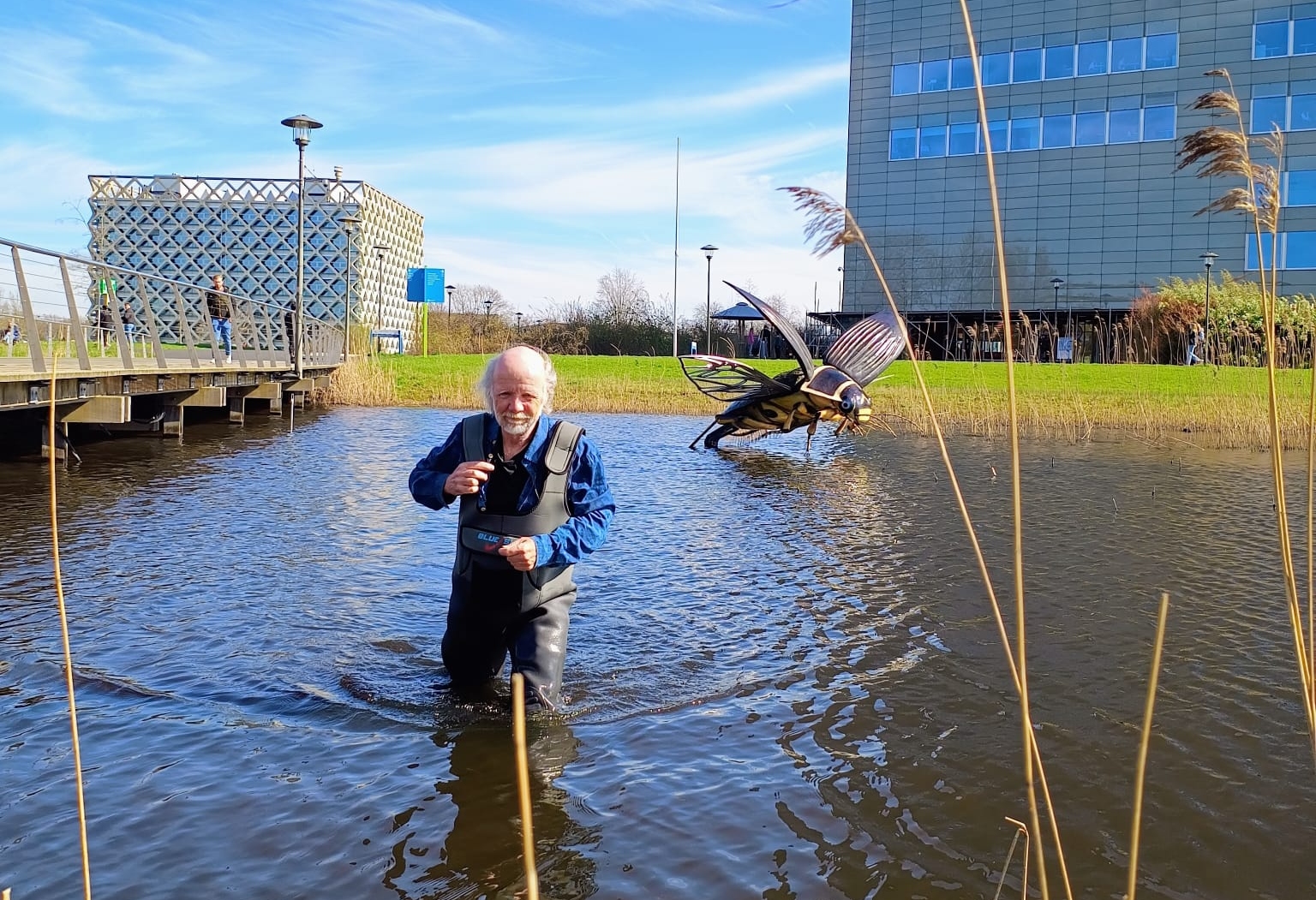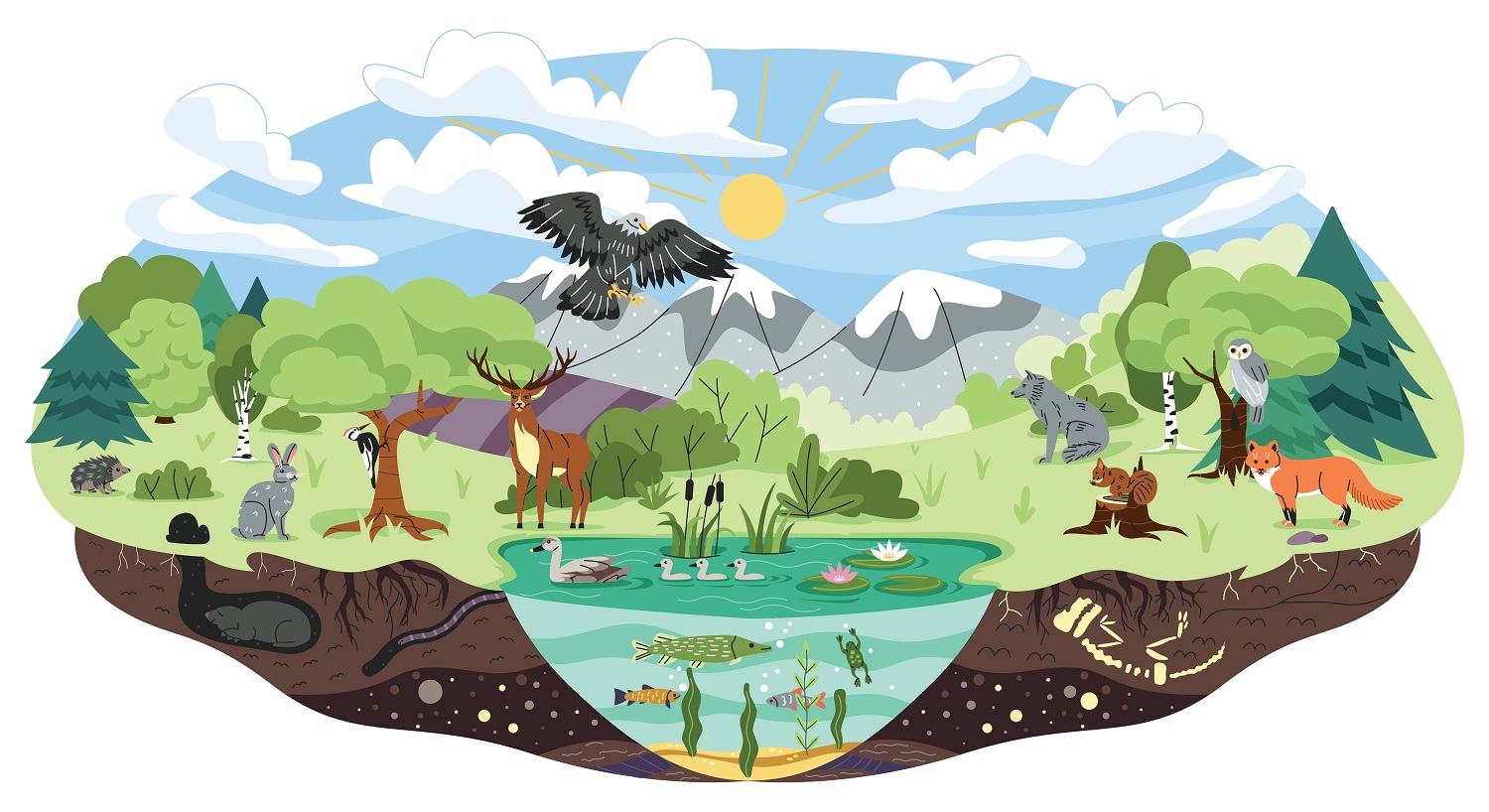Art on campus. Often you walk past it without noticing, but sometimes it can suddenly grab your attention. Like the water beetle in the pond between Forum and Orion, which appears to be making sounds. Student editors Steven Snijders and Aleix Nogués sought out the man behind the beetle and asked for an explanation.
The water beetle. A giant beetle is seemingly leaving the pond between Orion and Forum. You have probably walked past it and wondered. Wondered about its appearance, the sounds it’s making, and the ‘Must leave’ sign.
Allowing people to wonder is an intended effect of this piece of art, so not every question you might have about this can be answered with a clear-cut answer. However, we can go a long way in bringing you the story of this interesting piece of art that tickles the senses of many campus inhabitants.
Marten Scheffer, intellectual father of this sculpture, is a professor of Aquatic Ecology and Water Quality Management. His research focuses on complex systems. He has a passion for the arts too. ‘I would say that I am between art and science. I am always looking to bridge those worlds. Art and science overlap but are also complementary. In contrast to science, art has no obligation to give answers. It can just point something out and touch the heart.’ There is more to say about the role of science in this artwork, which is explained later on.
Short poem
Why do we have this water beetle on the campus? ‘When you walk across the bridge, I hope this piece of art can distract people from their worries and seriousness. When I stroll over the bridge, I see people entering with a grim face, as there is always enough to worry about in everybody’s life. Then they hear the sounds, see the hyper-realistic crazily big beetle, and wonder about it. When I see people exiting the bridge with a smile, I think I did something good.’
The part of the art that provokes the most wonder might be the ‘Must leave’ sign. Scheffer explains: ‘Sometimes, as a human being, you have to leave. Leave your home country to go to Wageningen, or leave Wageningen after graduation. Nothing is permanent. Leaving can be frightening, but it can also bring you so much. The same holds true for the water beetle. At some point, a pond can run dry, and the water beetle must leave. The exact meaning is something that I leave up to you, the visitor. I consider it to be a short poem.’
Opposition
The beetle has been discussed by students wandering around the campus countless times over the last couple of years. Even before the beetle came into existence, the artwork was already being debated. The idea for this artwork met with criticism by an art committee. This committee was advising which artworks should be placed on campus. Scheffer: ‘They said to me that it looked too much like a beetle. When you say something like that, you don’t know much about art in my opinion. Fortunately, it was eventually approved. In 2009, I won the Spinoza prize. The prize money could be spent on science, but also science-related things. I chose to allocate part of the money to fund this work of art.’
Soundtrack
Scheffer: ‘Music and sounds in general really change your perception of reality. I wanted to make a soundtrack of reality. I recorded sound samples and I let input from the surroundings determine, in real time, what sounds are being produced. There are relaxing musical tones, sounds of water, frogs and crickets. What you hear depends on the weather and the time of the day. It is connected to rain, wind, temperature and light sensors. The wind is the most important input for the music. The speed of the wind differs all the time. It comes in little shock waves. A certain interval of wind speed corresponds to a certain tone being played in one of the rhythmic patterns that I created.’
Frogs
‘This means that the music being played is never the same, meandering with the weather. For the frogs, I used agent-based modelling to simulate a “choir of frogs”. I study complex systems where there is often predictability and randomness at the same time. The frogs are reacting to each other in patterns, but with a random element. I’m always looking for interesting sounds to add. I might add galloping horses that you hear passing over the bridge in stereo.’
Recordings
Right now, the computer is down. It plays recordings instead of reacting to the sensors directly. ‘But it will be back on again soon,’ Scheffer assures us. Just like a real animal, the beetle needs some care every now and then, it seems.

 Marten Scheffer near his beetle ‘Must leave’. Photo Steven Snijders
Marten Scheffer near his beetle ‘Must leave’. Photo Steven Snijders 

